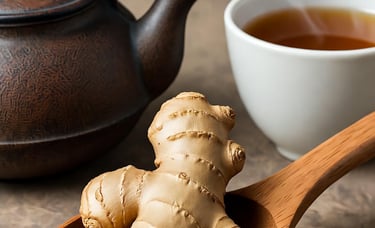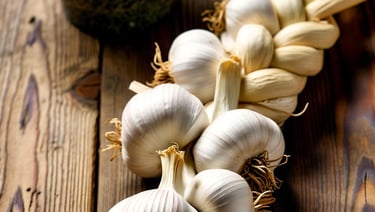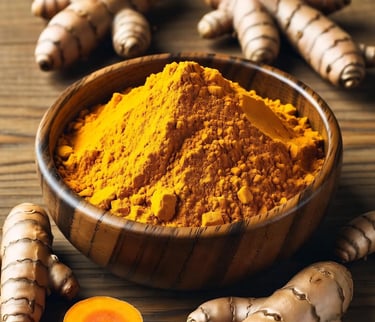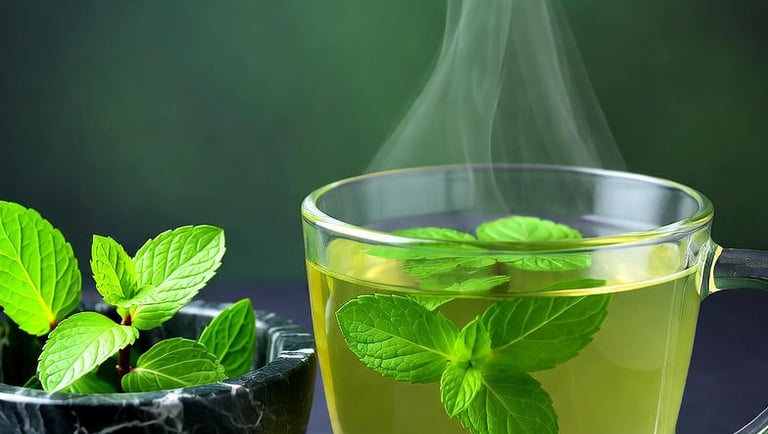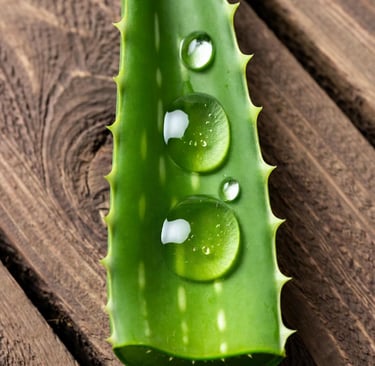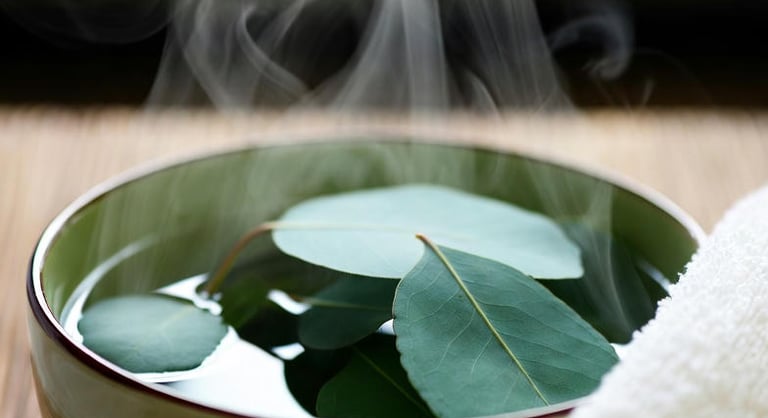Embracing the Healing Hearth: Top 10 Traditional Home Remedies for Your Family
Picture this: a chilly evening, the family gathered around the kitchen table, laughter mingling with the scent of simmering herbs. There’s something special about the wisdom passed down through generations—those time-tested home remedies that soothe, heal, and bring us closer together. Curious about the secrets tucked away in your pantry?
10/21/202515 min read
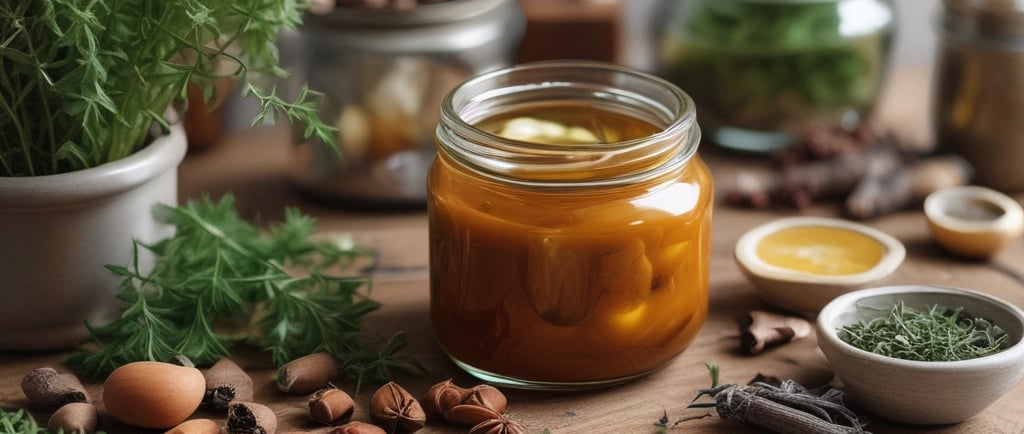

Picture this: a chilly evening, the family gathered around the kitchen table, laughter mingling with the scent of simmering herbs. There’s something special about the wisdom passed down through generations—those time-tested home remedies that soothe, heal, and bring us closer together. Curious about the secrets tucked away in your pantry? Let’s dive into the top 10 traditional home remedies, backed by science, that have been comforting families for centuries, each one a little hug from the past, ready to nurture every member of your household year-round.
1. Honey for Soothing Sore Throats and Coughs
Honey is nature’s sweet healer, packed with antimicrobial properties that make it a go-to for sore throats and coughs. Its thick, soothing texture coats the throat, calming irritation, while its natural compounds help fight bacteria and viruses.
Scientific Evidence: A 2007 trial published in Archives of Pediatrics & Adolescent Medicine found that honey significantly reduced nighttime coughing in children compared to over-the-counter cough medicines, likely due to its antimicrobial and soothing properties. Its antibacterial effects are attributed to natural preservatives like low water content and high acidity (Journal of Agricultural and Food Chemistry, 2017).
How to Use:
For Adults and Teens: Stir 1–2 teaspoons of raw honey into warm tea or water to ease a sore throat.
For Kids (Over 1 Year): Give ½–1 teaspoon of honey before bed to reduce nighttime coughing.
Year-Round Tip: Use honey as a daily immune booster by adding it to oatmeal or smoothies.
Precautions for Children: Never give honey to children under 1 year due to the risk of botulism, a rare but serious illness caused by Clostridium botulinum. Use small doses (½ teaspoon) for children aged 1–5 years to avoid digestive upset. Consult a pediatrician if symptoms persist.
Recipes:
Honey-Lemon Cough Syrup: Mix ¼ cup honey with 2 tablespoons fresh lemon juice. Take 1 teaspoon every few hours for cough relief.
Honey-Ginger Tea: Steep 1 teaspoon grated fresh ginger in 1 cup hot water for 5 minutes, strain, and stir in 1 tablespoon honey. Drink warm to soothe throats.
Honey-Cinnamon Milk: Warm 1 cup milk, mix in 1 teaspoon honey and a pinch of cinnamon. Perfect for kids to calm coughs before bed.
Honey-Turmeric Shot: Combine 1 tablespoon honey with ½ teaspoon turmeric powder and a pinch of black pepper. Take as a quick immune boost.
Honey-Mint Soother: Mix 1 tablespoon honey with 1 teaspoon crushed fresh mint leaves in warm water. Sip to ease throat irritation.
Seasonal Recipes:
Winter Honey-Spiced Chai (Winter): Simmer 1 cup milk with 1 teaspoon honey, ½ teaspoon cinnamon, ¼ teaspoon nutmeg, and a pinch of cloves. Drink warm to soothe throats in cold weather.
Spring Honey-Citrus Tonic (Spring): Mix 1 tablespoon honey with ½ cup orange juice and 1 teaspoon lemon zest. Serve chilled for a refreshing immune boost.
Fall Honey-Apple Cider Sip (Fall): Warm 1 cup apple cider with 1 tablespoon honey and a dash of allspice. Sip to comfort throats during autumn chills.
Educational Tip: Always use raw, unprocessed honey for maximum benefits, as pasteurization can reduce its healing properties.
2. Ginger for Digestion and Nausea
Ginger’s spicy warmth is a digestive dynamo, easing nausea, bloating, and motion sickness. Its anti-inflammatory compounds, like gingerol, make it a family-friendly remedy for upset stomachs.
Scientific Evidence: Research published in The Lancet (1982) demonstrated ginger’s effectiveness in reducing motion sickness, while a 2014 meta-analysis in Nutrition Journal confirmed its efficacy in alleviating nausea, particularly in pregnancy and chemotherapy patients, due to gingerol’s antiemetic properties.
How to Use:
For Adults: Chew a small piece of fresh ginger or sip ginger tea to settle the stomach.
For Kids: Offer diluted ginger tea (1:1 with water) to ease tummy troubles.
Year-Round Tip: Keep ginger tea on hand for cold weather to warm the body and aid digestion.
Precautions for Children: Use diluted ginger preparations for children under 6 to avoid stomach irritation from its spicy nature. Start with small doses (¼ teaspoon grated ginger in tea) and monitor for allergic reactions. Consult a pediatrician for children under 2.
Recipes:
Classic Ginger Tea: Boil 1-inch fresh ginger (sliced) in 2 cups water for 10 minutes, strain, and add honey to taste. Sip slowly for nausea relief.
Ginger-Lemon Chews: Simmer ½ cup ginger juice with ½ cup sugar until thickened, pour into molds, and cool. Chew for motion sickness.
Ginger-Honey Smoothie: Blend 1 teaspoon grated ginger, 1 banana, 1 cup yogurt, and 1 tablespoon honey. Great for kids’ upset stomachs.
Ginger-Mint Infusion: Steep 1-inch sliced ginger and 5 fresh mint leaves in 1 cup hot water for 10 minutes. Drink to calm digestion.
Ginger-Turmeric Broth: Simmer 1-inch ginger and ½ teaspoon turmeric in 2 cups vegetable broth for 15 minutes. Sip for digestive comfort.
Seasonal Recipes:
Summer Ginger-Lime Cooler (Summer): Blend 1 teaspoon grated ginger with 1 cup cold water, 1 tablespoon lime juice, and honey to taste. Serve over ice for nausea relief.
Fall Ginger-Pumpkin Soup (Fall): Simmer 1-inch ginger with 1 cup pumpkin puree and 2 cups broth for 15 minutes. Blend and serve warm for digestion.
Winter Ginger-Cinnamon Tea (Winter): Steep 1-inch ginger and a cinnamon stick in 1 cup hot water for 10 minutes, add honey, and sip to warm the body.
Educational Tip: Store fresh ginger in the fridge for up to three weeks or freeze it for longer use. Grate it directly into recipes to preserve potency.
3. Chamomile for Relaxation and Sleep
Chamomile’s gentle, apple-like flavor makes it a bedtime favorite. Its calming properties help reduce anxiety, promote sleep, and soothe digestive issues, making it ideal for all ages.
Scientific Evidence: A 2016 study in Phytomedicine found that chamomile extract significantly reduced anxiety symptoms, while a 2011 study in Molecular Medicine Reports showed its apigenin content promotes sleep by interacting with GABA receptors. It also aids digestion by relaxing smooth muscles (Journal of Clinical Psychopharmacology, 2019).
How to Use:
For Adults: Drink a cup of chamomile tea 30 minutes before bed to unwind.
For Kids: Dilute chamomile tea with water for a soothing bedtime drink.
Year-Round Tip: Use chamomile tea as a base for herbal baths to calm irritated skin.
Precautions for Children: Dilute chamomile tea (1:1 with water) for children under 5 to prevent overstimulation or allergic reactions. Avoid in children with ragweed allergies, as chamomile may cause cross-reactivity. Consult a pediatrician for infants under 6 months.
Recipes:
Chamomile Bedtime Tea: Steep 1 tablespoon dried chamomile flowers in 1 cup hot water for 5 minutes, strain, and sweeten with honey.
Chamomile Bath Soak: Add 2 cups strong chamomile tea to a warm bath for kids with skin irritation or to relax adults.
Chamomile-Lavender Infusion: Mix 1 teaspoon chamomile and ½ teaspoon dried lavender in 1 cup hot water, steep 5 minutes, and sip for deep relaxation.
Chamomile-Honey Popsicles: Mix 1 cup cooled chamomile tea with 1 tablespoon honey, pour into molds, and freeze for a calming treat for kids.
Chamomile-Mint Compress: Soak a cloth in cooled chamomile tea with a few crushed mint leaves, apply to forehead for stress relief.
Seasonal Recipes:
Spring Chamomile-Mint Tea (Spring): Steep 1 teaspoon chamomile and 5 fresh mint leaves in 1 cup hot water for 5 minutes. Sip for seasonal calm.
Summer Chamomile-Cucumber Cooler (Summer): Blend 1 cup cooled chamomile tea with ½ cup cucumber juice and a splash of honey. Serve chilled.
Fall Chamomile-Apple Infusion (Fall): Steep 1 teaspoon chamomile with ¼ cup apple slices in 1 cup hot water for 5 minutes. Drink for cozy relaxation.
Educational Tip: Check for chamomile allergies, especially in those sensitive to ragweed. Use organic, dried flowers for the best quality.
4. Garlic for Immune Support
Garlic’s pungent power comes from allicin, a compound with antibacterial and antiviral properties. It’s a winter staple for boosting immunity and fighting colds.
Scientific Evidence: A 2001 study in Advances in Therapy found that garlic supplements reduced the incidence of colds by 63% compared to placebo. Allicin and other sulfur compounds exhibit antibacterial and antiviral effects (Microbial Pathogenesis, 2017).
How to Use:
For Adults: Add raw garlic to soups or dressings for immune support.
For Kids: Use cooked garlic in meals to make it gentler on young stomachs.
Year-Round Tip: Incorporate garlic into daily cooking to maintain strong immunity.
Precautions for Children: Avoid raw garlic for children under 3 due to its strong flavor and potential for digestive upset. Use small amounts of cooked garlic in meals and monitor for allergies or stomach discomfort. Consult a pediatrician for children under 1.
Recipes:
Garlic-Honey Syrup: Crush 2 garlic cloves, mix with ¼ cup honey, let sit 24 hours, and take 1 teaspoon daily for immune health.
Garlic-Lemon Soup: Simmer 3 crushed garlic cloves in 4 cups chicken broth with lemon zest for 15 minutes. Serve warm to fight colds.
Garlic Butter Spread: Mix 1 minced garlic clove with 2 tablespoons softened butter. Spread on toast for a kid-friendly immune boost.
Garlic-Olive Oil Dressing: Blend 1 minced garlic clove with ¼ cup olive oil, 1 tablespoon lemon juice, and a pinch of salt. Use on salads for daily immunity.
Garlic-Veggie Broth: Simmer 2 garlic cloves with carrots, celery, and onion in 4 cups water for 20 minutes. Sip for a gentle immune tonic.
Seasonal Recipes:
Winter Garlic-Potato Soup (Winter): Simmer 3 garlic cloves with 2 diced potatoes in 4 cups broth for 20 minutes, blend, and serve warm for cold-season immunity.
Spring Garlic-Herb Pesto (Spring): Blend 2 garlic cloves with 1 cup fresh basil, ¼ cup olive oil, and a pinch of salt. Spread on toast for a fresh immune boost.
Fall Garlic-Roasted Veggie Dip (Fall): Roast 2 garlic cloves with carrots and onions at 400°F for 20 minutes, blend with ½ cup yogurt and a pinch of salt for a kid-friendly dip.
Educational Tip: Crush or chop garlic and let it sit for 10 minutes before cooking to maximize allicin production.
5. Apple Cider Vinegar for Skin and Digestion
Apple cider vinegar (ACV) is a tangy multitasker, balancing skin pH and aiding digestion. Its acetic acid content helps with bloating and minor skin irritations.
Scientific Evidence: A 2016 study in Diabetes Care showed that ACV improved post-meal blood sugar levels in diabetic patients, likely due to acetic acid’s effect on gastric emptying. Its antimicrobial properties can reduce acne-causing bacteria (Journal of Cosmetic Dermatology, 2018).
How to Use:
For Adults: Dilute 1 tablespoon ACV in a glass of water to drink before meals.
For Kids: Use diluted ACV as a skin rinse for mild rashes (1:4 with water).
Year-Round Tip: Use ACV in salad dressings for daily digestive support.
Precautions for Children: Avoid internal use of ACV for children under 6 due to its acidity, which may irritate young stomachs. For topical use, dilute heavily (1:10 with water) and test on a small skin area to avoid irritation. Consult a pediatrician for children under 2.
Recipes:
ACV Digestive Tonic: Mix 1 tablespoon ACV, 1 teaspoon honey, and 1 cup warm water. Drink before meals to aid digestion.
ACV Skin Rinse: Combine 1 part ACV with 4 parts water. Apply with a cotton pad to soothe acne or rashes.
ACV Hair Rinse: Dilute 2 tablespoons ACV in 1 cup water. Use as a final hair rinse for shine and scalp health.
ACV-Lemon Detox Drink: Mix 1 tablespoon ACV, 1 tablespoon lemon juice, and a pinch of cayenne in 1 cup water. Sip for a morning cleanse.
ACV-Foot Soak: Add ¼ cup ACV to a basin of warm water. Soak feet for 15 minutes to relieve odor and soothe skin.
Seasonal Recipes:
Summer ACV-Berry Spritzer (Summer): Mix 1 tablespoon ACV with 1 cup sparkling water and ¼ cup mashed berries. Serve chilled for digestion.
Fall ACV-Cranberry Tonic (Fall): Combine 1 tablespoon ACV with ½ cup cranberry juice and ½ cup water. Sip for digestive health.
Winter ACV-Spiced Cider (Winter): Warm 1 cup apple cider with 1 tablespoon ACV and a pinch of cinnamon. Drink for a cozy digestive aid.
Educational Tip: Always use raw, unfiltered ACV with the “mother” for maximum benefits. Avoid direct application on sensitive skin.
6. Turmeric for Inflammation and Healing
Turmeric’s golden glow comes from curcumin, a potent anti-inflammatory. It’s great for soothing joint pain, boosting immunity, and healing minor cuts.
Scientific Evidence: A 2017 review in Foods highlighted curcumin’s anti-inflammatory and antioxidant effects, reducing symptoms of arthritis and inflammatory conditions. Its wound-healing properties were noted in Phytotherapy Research (2015) due to its antimicrobial action.
How to Use:
For Adults: Add ½ teaspoon turmeric to smoothies or soups for inflammation relief.
For Kids: Mix a pinch of turmeric into warm milk for a soothing drink.
Year-Round Tip: Use turmeric paste on minor cuts to speed healing.
Precautions for Children: Use minimal amounts (a pinch) for children under 6 to avoid digestive upset. Avoid topical use on open wounds without consulting a pediatrician, as it may cause irritation. Test for allergies with a small dose.
Recipes:
Golden Milk: Warm 1 cup milk, stir in ½ teaspoon turmeric, a pinch of black pepper, and 1 teaspoon honey. Drink for inflammation relief.
Turmeric Paste: Mix 2 tablespoons turmeric powder with 1 tablespoon water. Apply to minor cuts or scrapes.
Turmeric Smoothie: Blend 1 banana, 1 cup almond milk, ½ teaspoon turmeric, and a pinch of cinnamon for a kid-friendly immune boost.
Turmeric-Lemon Tea: Steep ½ teaspoon turmeric and 1 teaspoon lemon zest in 1 cup hot water for 5 minutes. Sweeten with honey.
Turmeric-Oat Scrub: Mix 1 tablespoon turmeric powder with 2 tablespoons ground oats and water to form a paste. Use as a gentle exfoliant.
Seasonal Recipes:
Spring Turmeric-Carrot Soup (Spring): Simmer ½ teaspoon turmeric with 2 cups chopped carrots and 2 cups broth for 15 minutes, blend, and serve.
Summer Turmeric-Mango Smoothie (Summer): Blend ½ teaspoon turmeric, 1 cup mango, 1 cup coconut water, and a pinch of black pepper. Serve chilled.
Winter Turmeric-Ginger Latte (Winter): Warm 1 cup milk with ½ teaspoon turmeric, ½ teaspoon ginger, and 1 teaspoon honey. Sip for warmth and healing.
Educational Tip: Add a pinch of black pepper to turmeric recipes to enhance curcumin absorption.
7. Peppermint for Headaches and Digestion
Peppermint’s cooling menthol soothes headaches, eases digestion, and refreshes the senses. It’s a gentle remedy for adults and kids, perfect for stressful days or heavy meals.
Scientific Evidence: A 2019 study in Cephalalgia found that topical peppermint oil reduced tension headache severity, likely due to menthol’s muscle-relaxing effects. Its antispasmodic properties aid digestion, as shown in Alimentary Pharmacology & Therapeutics (2014) for IBS relief.
How to Use:
For Adults: Sip peppermint tea or inhale peppermint steam for headaches.
For Kids: Offer diluted peppermint tea for tummy aches.
Year-Round Tip: Keep peppermint essential oil for aromatherapy to relieve stress.
Precautions for Children: Avoid peppermint oil on children under 6, especially near the face, due to the risk of respiratory distress from strong menthol. Use diluted tea (1:1 with water) for children and monitor for allergic reactions. Consult a pediatrician for infants.
Recipes:
Peppermint Tea: Steep 1 tablespoon fresh peppermint leaves in 1 cup hot water for 5 minutes. Sip for digestion or headaches.
Peppermint Steam Inhalation: Add 3–5 drops peppermint essential oil to a bowl of hot water, inhale steam under a towel for headache relief.
Peppermint Foot Soak: Add 2 tablespoons dried peppermint to a basin of warm water. Soak feet for relaxation.
Peppermint-Lemon Cooler: Mix 1 cup cooled peppermint tea with 1 tablespoon lemon juice and honey to taste. Serve over ice for kids.
Peppermint-Honey Massage Oil: Combine 5 drops peppermint oil with 2 tablespoons coconut oil. Massage temples for headache relief.
Seasonal Recipes:
Summer Peppermint-Watermelon Slush (Summer): Blend 1 cup cooled peppermint tea with 1 cup watermelon chunks and ice. Serve chilled.
Fall Peppermint-Pumpkin Latte (Fall): Mix 1 cup warm peppermint tea with 2 tablespoons pumpkin puree and 1 teaspoon honey. Sip for cozy digestion.
Winter Peppermint-Mocha Drink (Winter): Combine 1 cup warm peppermint tea with 1 tablespoon cocoa powder and 1 teaspoon honey. Drink for warmth.
Educational Tip: Avoid peppermint oil on young children’s faces due to its strong menthol content.
8. Aloe Vera for Skin Soothing
Aloe vera’s cooling gel is a skin savior, healing burns, cuts, and irritation. Its anti-inflammatory properties make it a must-have for family first aid year-round.
Scientific Evidence: A 2014 study in Burns showed that aloe vera gel significantly accelerated burn healing compared to standard treatments, due to its anti-inflammatory and antimicrobial polysaccharides. It also hydrates skin (Skin Pharmacology and Physiology, 2013).
How to Use:
For Adults and Kids: Apply fresh aloe gel to sunburns or minor cuts.
Year-Round Tip: Use aloe gel as a moisturizer for dry skin in winter.
Precautions for Children: Test aloe gel on a small patch of skin before widespread use to check for allergies. Avoid applying to deep wounds or near the eyes. Consult a pediatrician for infants under 6 months.
Recipes:
Aloe Vera Burn Gel: Scrape gel from a fresh aloe leaf and apply directly to burns or irritated skin.
Aloe-Coconut Moisturizer: Mix 2 tablespoons aloe gel with 1 tablespoon coconut oil for a hydrating lotion.
Aloe-Honey Mask: Combine 1 tablespoon aloe gel with 1 teaspoon honey. Apply to face for 15 minutes to soothe acne.
Aloe-Lavender Spray: Mix ¼ cup aloe gel with 5 drops lavender oil and ¼ cup water in a spray bottle. Mist on skin for cooling relief.
Aloe-Oat Soother: Blend 2 tablespoons aloe gel with 1 tablespoon ground oats. Apply to irritated skin for 10 minutes.
Seasonal Recipes:
Summer Aloe-Cucumber Gel (Summer): Blend ¼ cup aloe gel with ¼ cup cucumber puree. Apply to sunburned skin for cooling relief.
Spring Aloe-Mint Mask (Spring): Mix 2 tablespoons aloe gel with 1 teaspoon crushed mint leaves. Apply to face for a refreshing mask.
Winter Aloe-Shea Butter Cream (Winter): Combine 2 tablespoons aloe gel with 1 tablespoon shea butter. Use as a moisturizer for dry skin.
Educational Tip: Grow an aloe plant at home for a fresh, sustainable supply of gel.
9. Oatmeal for Skin Irritation
Oatmeal’s anti-inflammatory properties make it a gentle remedy for eczema, rashes, and dry skin. It’s safe for all ages, especially for babies and kids with sensitive skin.
Scientific Evidence: A 2015 study in Journal of Drugs in Dermatology found that colloidal oatmeal significantly reduced eczema symptoms due to its avenanthramides, which have anti-inflammatory and antihistamine effects. It also forms a protective barrier on the skin (Clinical, Cosmetic and Investigational Dermatology, 2017).
How to Use:
For Adults and Kids: Add oatmeal to baths to soothe itchy-skin.
Year-Round Tip: Use oatmeal masks for facial irritation or dryness.
Precautions for Children: Ensure oatmeal is finely ground to avoid skin irritation in baths. Test on a small skin area for allergies, especially in children with gluten sensitivity. Consult a pediatrician for infants under 6 months.
Recipes:
Oatmeal Bath: Grind 1 cup rolled oats into a fine powder, add to a warm bath, and soak for 15 minutes.
Oatmeal-Honey Mask: Mix 2 tablespoons ground oats with 1 tablespoon honey and a splash of water. Apply to face for 10 minutes.
Oatmeal Scrub: Combine 1 tablespoon ground oats with 1 teaspoon olive oil. Gently scrub dry skin for exfoliation.
Oatmeal-Lavender Sachet: Mix ½ cup ground oats with 1 tablespoon dried lavender, place in a cloth bag, and add to bath for soothing aroma.
Oatmeal-Milk Paste: Blend 2 tablespoons ground oats with 1 tablespoon milk. Apply to irritated skin for a calming mask.
Seasonal Recipes:
Winter Oatmeal-Cinnamon Bath (Winter): Grind 1 cup oats with 1 teaspoon cinnamon, add to a warm bath for dry skin relief.
Spring Oatmeal-Rose Mask (Spring): Mix 2 tablespoons ground oats with 1 tablespoon rose water. Apply to face for a soothing mask.
Summer Oatmeal-Yogurt Cooler (Summer): Combine 2 tablespoons ground oats with 1 tablespoon yogurt, apply to skin, and rinse for cooling relief.
Educational Tip: Use colloidal oatmeal for baths, as it dissolves better and provides more relief.
10. Eucalyptus for Congestion Relief
Eucalyptus’s menthol-like aroma clears nasal passages and eases congestion. Its antimicrobial properties make it a winter essential for colds and sinus issues.
Scientific Evidence: A 2009 study in Respiratory Medicine found that eucalyptus oil inhalation improved symptoms of upper respiratory infections due to its cineole content, which has mucolytic and anti-inflammatory effects. Its antimicrobial properties were confirmed in Letters in Applied Microbiology (2010).
How to Use:
For Adults: Use eucalyptus steam inhalation for congestion.
For Kids: Add a few drops of eucalyptus oil to a humidifier (diluted) for nighttime relief.
Year-Round Tip: Use eucalyptus oil in a diffuser for a refreshing home environment.
Precautions for Children: Avoid eucalyptus oil for children under 6, especially near the face, due to the risk of respiratory distress or seizures from cineole. Use heavily diluted (1 drop per 2 tablespoons carrier oil) for topical applications and consult a pediatrician for children under 2.
Recipes:
Eucalyptus Steam Inhalation: Add 3–5 drops eucalyptus oil to a bowl of hot water, inhale steam under a towel for 5 minutes.
Eucalyptus Chest Rub: Mix 5 drops eucalyptus oil with 2 tablespoons coconut oil. Rub on chest for congestion relief.
Eucalyptus Bath: Add 5 drops eucalyptus oil to a warm bath for a soothing, decongesting soak.
Eucalyptus-Lemon Spray: Combine 10 drops eucalyptus oil, 5 drops lemon oil, and ½ cup water in a spray bottle. Mist pillows for nighttime relief.
Eucalyptus-Mint Balm: Mix 5 drops eucalyptus oil, 3 drops peppermint oil, and 2 tablespoons shea butter. Apply to temples for sinus relief.
Seasonal Recipes:
Winter Eucalyptus-Lavender Diffuser (Winter): Add 5 drops eucalyptus oil and 3 drops lavender oil to a diffuser for cozy congestion relief.
Fall Eucalyptus-Orange Inhalation (Fall): Add 3 drops eucalyptus oil and 2 drops orange oil to a bowl of hot water for a refreshing steam.
Spring Eucalyptus-Rosemary Bath (Spring): Add 5 drops eucalyptus oil and 3 drops rosemary oil to a warm bath for clear breathing.
Educational Tip: Dilute eucalyptus oil for kids and avoid direct skin application to prevent irritation.
A Warm Embrace of Simplicity
As the seasons change and life hums along, these simple, science-backed remedies weave a thread of care through your family’s days. There’s a quiet beauty in turning to nature’s gifts—honey from the hive, ginger from the earth, or aloe from a sunny windowsill. These traditions remind us that healing doesn’t need to be complicated; it’s in the small, shared moments of stirring tea, rubbing a soothing balm, or laughing over a steamy bowl. Here’s to nurturing your loved ones with the gentle, time-honored wisdom of home, wrapped in warmth and love.


